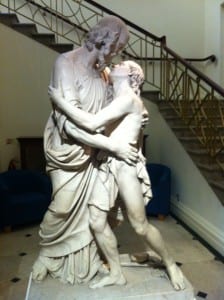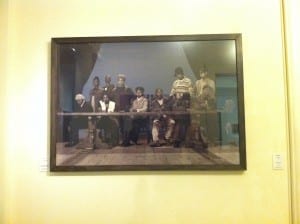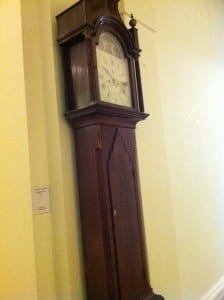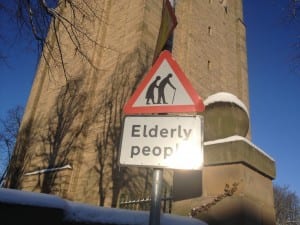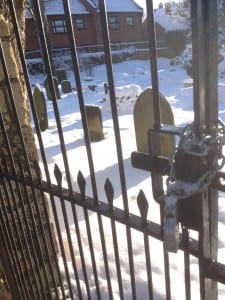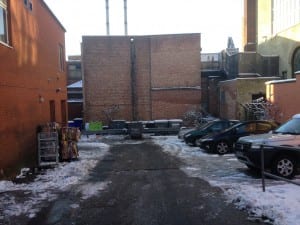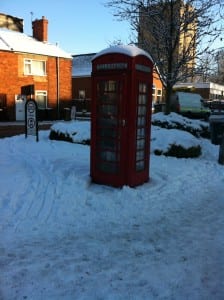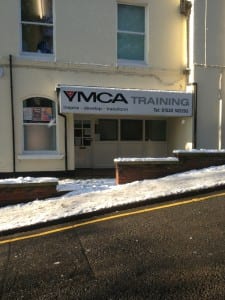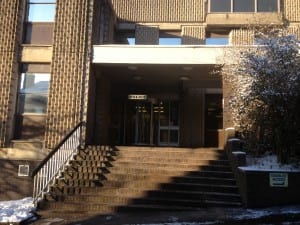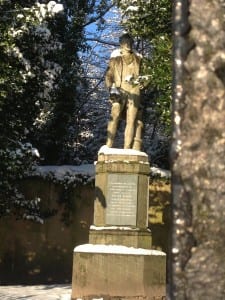“In order to help us focus our copious amounts of ideas, we needed to find a way to get the project on its feet. Correlating with our fascination with the clock in gallery 3, it had to be an exercise that would involve everyone constantly, and producing a mechanical like performance. I decided that although it was a small space and we had spent several hours in it, we needed to look at it in a more performance base way. This was the reasoning behind each person walking around freely, although with the intention of covering as much ground as possible. As well as this we passed a ball around linking our separate entities together. Furthermore reflecting back to the mechanism of a clock, bringing seperate things together and making them work effortlessly, which we intended each transfer to be.
Each time we did the exercise we added a different discpline, whether it be the way we move or the way we passed the ball.
The exercise took 6 minutes to do. Our performance is intending to be six hours long so in theory it could be a microcosm of the final performance.
Can you keep up with the ball?”
Author: Shane Humberstone
For our first attempt, this was a more natural movement, exploring the space with the only artificial element being passing the ball between us. This was used to help us engage with the space and interact with each other. We felt that this was useful as it showed us what it was like to work as part of a unit whilst still moving naturally, much like the mechanics of a clocks interior.
We then experimented with the concept of bio-mechanics whic included moving our bodies in time with the monotonous rhythm of a ticking clock. This made us consider the possibility of a more regulated piece, dominated by time and having time dictate our movements to us. The videos also show the reactions of an audience surprised by an experience they were not expecting. Several individuals were hesitant in entering the room, whilst others did not do so at all.
The final endeavour was one which was completely at odds with the first, in so far that it was mechanical, utterly devoid of natural movement and totally regulated. We found this to be useful as it challenged our previous conceptions of the space, forcing us to move differently and observe aspects of the room and displays we had hitherto ignored.
After our excercise, we interviewed members of the public who had briefly observed our performance. It was intriguing to hear their response to how the use of sound in the room did not distract from our visual display but was still recognised. They also said how the darkness of the room helped to channel their attention on to the performance. One individual compared our use of the concept of time with their own performance of an Ibsen text, also correlating with time. He explained how his exploration of the text included a coordination between human movement and the ticking of a clock.
Authors: Chloe Doherty, George Creighton, James Barker, Tabitha Hilton-Berry, Stephanie Jackson


 Left: Grandfather clock
Left: Grandfather clock 


